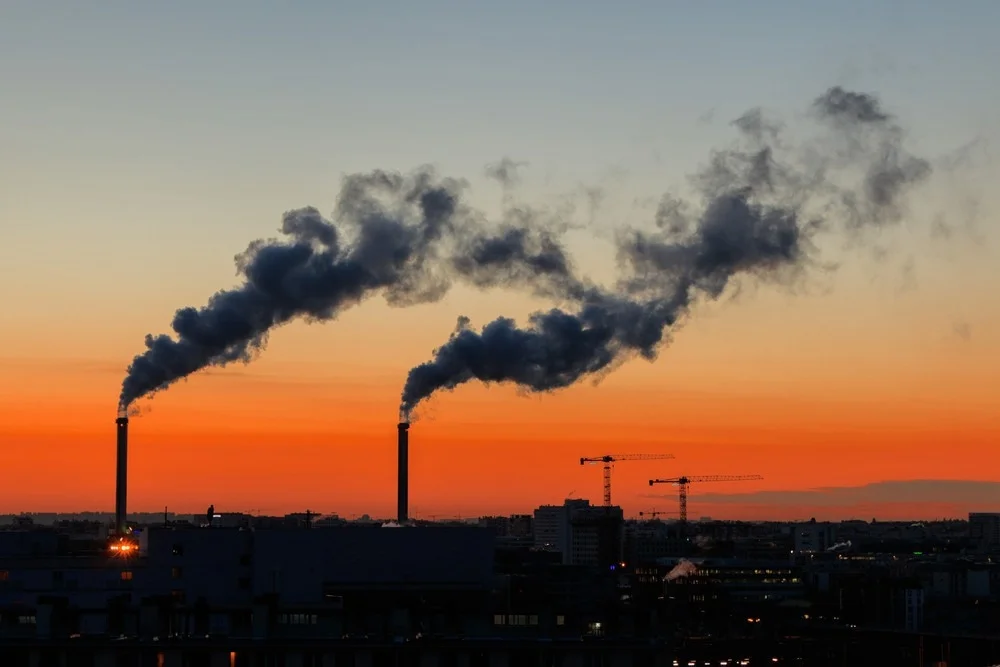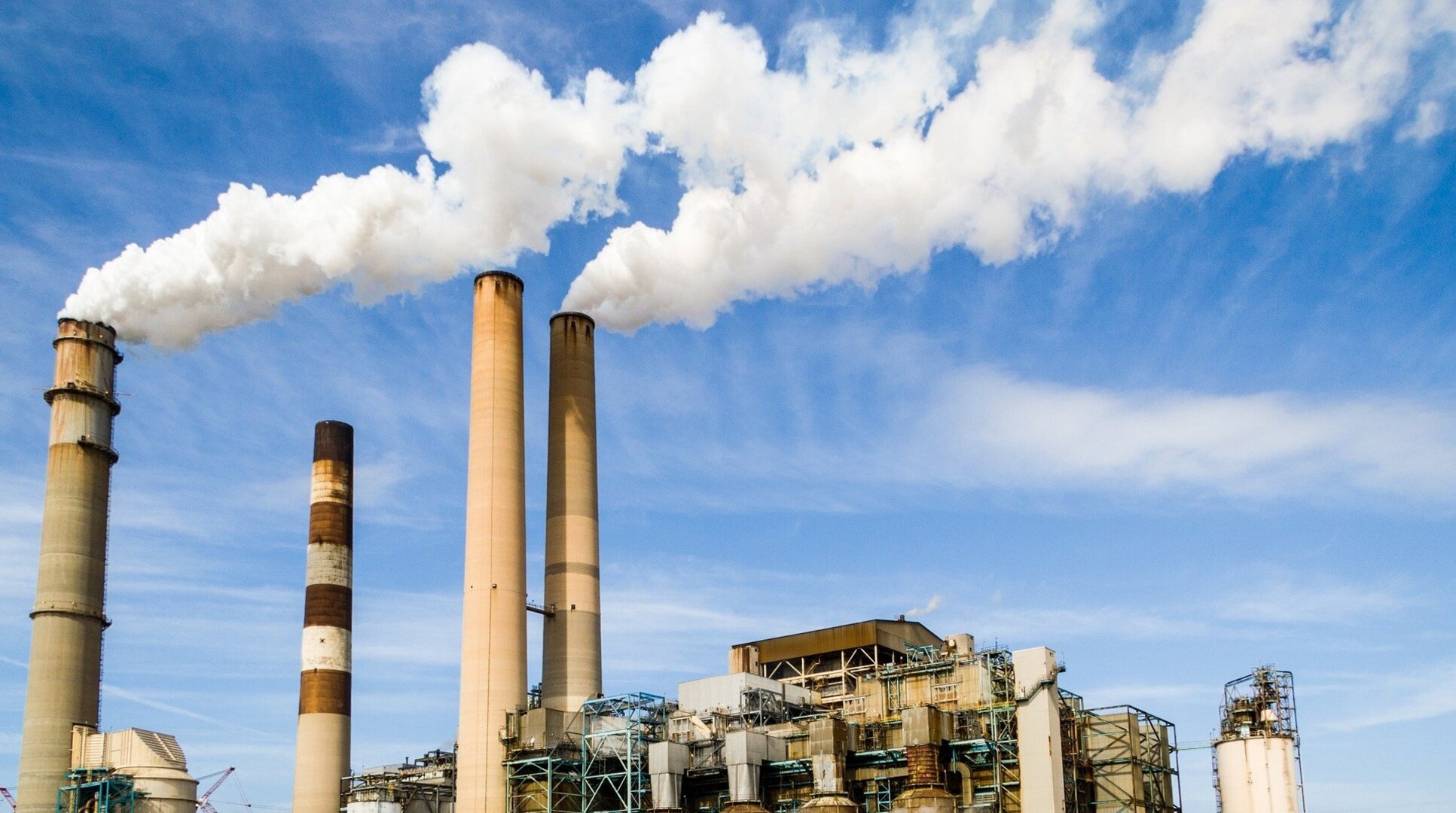Sulfur dioxide (SO₂) is a colorless, toxic gas with a pungent, irritating odor. It is one of the most important sulfur compounds in the atmosphere and plays a significant role in various industrial processes. Despite its usefulness, sulfur dioxide is also a major air pollutant with serious environmental and health impacts. This article explores the properties, uses, sources, and environmental and health effects of sulfur dioxide, as well as measures to control its emissions.
Properties of Sulfur Dioxide

Chemical and Physical Properties
Sulfur dioxide is a chemical compound with the formula SO₂. It consists of one sulfur atom covalently bonded to two oxygen atoms. Some key properties of sulfur include:
- Molecular Weight: 64.07 g/mol
- Density: 2.927 g/L (at 0°C and 1 atm)
- Boiling Point: -10°C (14°F)
- Melting Point: -72.7°C (-98.9°F)
- Solubility: Highly soluble in water, forming sulfurous acid (H₂SO₃)
Reactivity
Sulfur dioxide is highly reactive and can combine with various substances. In the atmosphere, it readily reacts with water vapor to form sulfuric acid (H₂SO₄), contributing to acid rain. It can also oxidize to form sulfur trioxide (SO₃), which further reacts with water to produce sulfuric acid. These reactions underscore the significance of sulfur in atmospheric chemistry and environmental pollution.
Industrial Uses of Sulfur Dioxide
Chemical Industry
Sulfur dioxide is widely used in the chemical industry for various applications, including:
- Sulfuric Acid Production: SO₂ is a key intermediate in the production of sulfuric acid (H₂SO₄), one of the most important industrial chemicals.
- Bleaching Agent: SO₂ is used as a bleaching agent in the manufacture of paper and textiles, helping to remove unwanted colors.
- Preservative: In the food and beverage industry, sulfur dioxide is used as a preservative and antimicrobial agent, particularly in winemaking and dried fruits.
Refining and Extraction
Sulfur dioxide plays a crucial role in refining and extraction processes, such as:
- Ore Processing: SO₂ is used in the extraction of metals from ores, particularly in the smelting of sulfide ores to produce pure metals like copper and zinc.
- Petroleum Refining: In petroleum refining, sulfur is used to remove impurities and sulfur compounds from crude oil.
Other Applications
Sulfur dioxide is also employed in various other industries, including:
- Refrigeration: SO₂ was historically used as a refrigerant before the advent of safer alternatives like chlorofluorocarbons (CFCs).
- Pharmaceuticals: It is used in the synthesis of certain pharmaceuticals and chemical compounds.
- Water Treatment: SO₂ is used to neutralize chlorine in wastewater treatment processes.
Sources of Sulfur Dioxide

Natural Sources
Sulfur dioxide is released into the atmosphere from several natural sources, including:
- Volcanic Eruptions: Volcanic activity is the largest natural source of sulfur dioxide, releasing significant amounts of SO₂ during eruptions.
- Biological Decay: The decomposition of organic matter and the activity of certain bacteria produce sulfur as a byproduct.
- Oceanic Emissions: Oceans release sulfur through the oxidation of dimethyl sulfide (DMS), a sulfur compound produced by marine organisms.
Anthropogenic Sources
Human activities contribute substantially to sulfur dioxide latoto emissions, primarily through:
- Fossil Fuel Combustion: The burning of coal, oil, and gas in power plants, industrial facilities, and residential heating releases large quantities of SO₂.
- Industrial Processes: Metal smelting, petroleum refining, and chemical manufacturing are significant sources of sulfur emissions.
- Transportation: Diesel engines and ships powered by heavy fuel oil also contribute to sulfur dioxide pollution.
Environmental and Health Impacts
Environmental Effects
Sulfur dioxide has several detrimental effects on the environment, including:
- Acid Rain: SO₂ reacts with water vapor in the atmosphere to form sulfuric acid, which falls as acid rain. Acid rain can damage forests, soils, and aquatic ecosystems by lowering the pH of water bodies and leaching essential nutrients from the soil.
- Visibility Reduction: SO₂ can form sulfate aerosols that scatter light, reducing visibility and contributing to haze and smog, particularly in urban areas.
- Vegetation Damage: High concentrations of sulfur dioxide can harm vegetation by causing leaf injury, reducing photosynthesis, and impairing plant growth.
Health Effects
Exposure to sulfur dioxide can have serious health implications, particularly for vulnerable populations such as children, the elderly, and individuals with respiratory conditions. Key health effects include:
- Respiratory Irritation: SO₂ can irritate the respiratory tract, causing coughing, wheezing, shortness of breath, and exacerbating asthma and other respiratory diseases.
- Cardiovascular Effects: Long-term exposure to sulfur has been linked to increased risks of cardiovascular diseases, including heart attacks and strokes.
- Eye and Skin Irritation: Direct contact with sulfur dioxide can cause irritation of the eyes and skin.
Monitoring and Regulation

Air Quality Standards
To protect human health and the environment, various countries have established air quality standards for sulfur dioxide. These standards set limits on the concentration of SO₂ in the air and are enforced through monitoring and regulatory measures. Examples of air quality standards include:
- United States: The Environmental Protection Agency (EPA) sets the National Ambient Air Quality Standards (NAAQS) for sulfur, with a primary standard of 75 parts per billion (ppb) for a 1-hour average concentration.
- European Union: The EU Ambient Air Quality Directive sets a limit of 125 micrograms per cubic meter (µg/m³) for a 24-hour average concentration, not to be exceeded more than three times per year.
Emission Controls
To reduce sulfur dioxide emissions, various control technologies and strategies are employed, including:
- Fuel Switching: Switching from high-sulfur fuels (e.g., coal) to low-sulfur fuels (e.g., natural gas) can significantly reduce SO₂ emissions.
- Flue Gas Desulfurization (FGD): FGD systems, also known as scrubbers, are used in power plants and industrial facilities to remove sulfur dioxide from exhaust gases before they are released into the atmosphere. These systems typically use a slurry of limestone or lime to absorb and neutralize SO₂.
- Process Modifications: Modifying industrial processes to reduce sulfur dioxide emissions, such as using alternative feedstocks or improving combustion efficiency, can also be effective.
International Agreements
International agreements and protocols play a crucial role in addressing sulfur dioxide emissions and their transboundary effects. Notable agreements include:
- The Helsinki Protocol: Under the Convention on Long-Range Transboundary Air Pollution (CLRTAP), the Helsinki Protocol aims to reduce sulfur emissions across Europe and North America.
- The Gothenburg Protocol: Also part of the CLRTAP, the Gothenburg Protocol sets emission reduction targets for sulfur dioxide, nitrogen oxides, volatile organic compounds, and ammonia to combat acidification, eutrophication, and ground-level ozone.
Conclusion
Sulfur dioxide is a significant industrial chemical with numerous applications, but it also poses serious environmental and health risks. Understanding its properties, uses, sources, and impacts is crucial for developing effective strategies to control and reduce emissions. Through stringent air quality standards, advanced emission control technologies, and international cooperation, it is possible to mitigate the harmful effects of sulfur and protect both human health and the environment. As industries and governments continue to address the challenges posed by sulfur dioxide, ongoing research and innovation will play a key role in finding sustainable solutions.
Read More Article About “Rupert Murdoch: A Titan of Media and Influence“
























